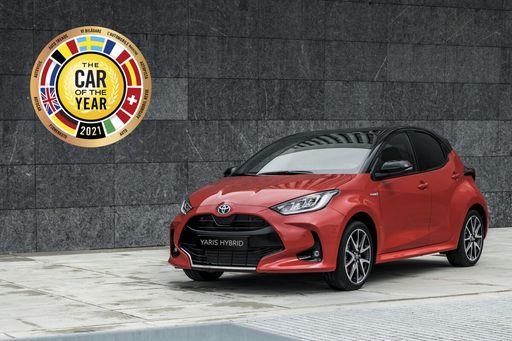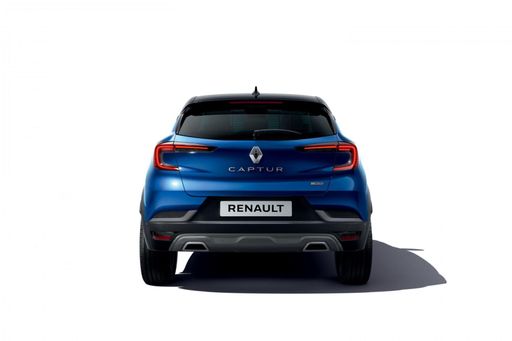Renault Captur vs Toyota Yaris – Performance, range & efficiency compared
Two cars, one duel: Renault Captur meets Toyota Yaris.
Which one wins in performance, efficiency and value for money? Find out now!
Costs and Efficiency:
Price and efficiency are often the first things buyers look at. Here it becomes clear which model has the long-term edge – whether at the pump, the plug, or in purchase price.
Renault Captur has a hardly perceptible advantage in terms of price – it starts at 20100 £, while the Toyota Yaris costs 21900 £. That’s a price difference of around 1723 £.
Fuel consumption also shows a difference: Toyota Yaris manages with 3.80 L and is therefore a bit more efficient than the Renault Captur with 4.50 L. The difference is about 0.70 L per 100 km.
Engine and Performance:
Power, torque and acceleration are the classic benchmarks for car enthusiasts – and here, some clear differences start to show.
When it comes to engine power, the Toyota Yaris has a decisively edge – offering 280 HP compared to 158 HP. That’s roughly 122 HP more horsepower.
In acceleration from 0 to 100 km/h, the Toyota Yaris is significantly quicker – completing the sprint in 5.50 s, while the Renault Captur takes 8.50 s. That’s about 3 s faster.
In terms of top speed, the Toyota Yaris performs evident better – reaching 230 km/h, while the Renault Captur tops out at 180 km/h. The difference is around 50 km/h.
There’s also a difference in torque: Toyota Yaris pulls noticeable stronger with 390 Nm compared to 270 Nm. That’s about 120 Nm difference.
Space and Everyday Use:
Whether family car or daily driver – which one offers more room, flexibility and comfort?
Both vehicles offer seating for 5 people.
In curb weight, Toyota Yaris is slightly lighter – 1090 kg compared to 1293 kg. The difference is around 203 kg.
In terms of boot space, the Renault Captur offers clearly perceptible more room – 422 L compared to 286 L. That’s a difference of about 136 L.
In maximum load capacity, the Renault Captur performs clearly perceptible better – up to 1363 L, which is about 428 L more than the Toyota Yaris.
When it comes to payload, Toyota Yaris to a small extent takes the win – 525 kg compared to 457 kg. That’s a difference of about 68 kg.
Who comes out on top?
Overall, the Toyota Yaris shows itself to be dominates this comparison and secures the title of DriveDuel Champion.
It convinces with the more balanced overall package and proves to be the more versatile choice for everyday use.

Toyota Yaris
Renault Captur
The Renault Captur is a compact SUV that combines stylish design with practical functionality, making it a popular choice for urban drivers. Its interior offers a versatile and comfortable space, featuring high-quality materials and modern technology. On the road, the Captur delivers a smooth and efficient driving experience, perfect for both city commutes and weekend adventures.
details @ renault-presse.de
@ renault-presse.de
 @ renault-presse.de
@ renault-presse.de
 @ renault-presse.de
@ renault-presse.de
 @ renault-presse.de
@ renault-presse.de
Toyota Yaris
The Toyota Yaris exudes a charming blend of practicality and style, making it an appealing choice for urban drivers. Its compact design allows for easy manoeuvrability in crowded city streets, while the interior offers a surprisingly spacious and comfortable environment. With a focus on fuel efficiency and reliability, the Yaris remains a popular option for those seeking a balance between performance and economy.
details @ Toyota
@ Toyota
 @ Toyota
@ Toyota

|

|
|
|
|
Costs and Consumption |
|
|---|---|
|
Price
20100 - 28300 £
|
Price
21900 - 46700 £
|
|
Consumption L/100km
4.5 - 6 L
|
Consumption L/100km
3.8 - 9.5 L
|
|
Consumption kWh/100km
-
|
Consumption kWh/100km
-
|
|
Electric Range
-
|
Electric Range
-
|
|
Battery Capacity
-
|
Battery Capacity
-
|
|
co2
102 - 135 g/km
|
co2
87 - 215 g/km
|
|
Fuel tank capacity
48 L
|
Fuel tank capacity
36 - 50 L
|
Dimensions and Body |
|
|---|---|
|
Body Type
SUV
|
Body Type
Hatchback
|
|
Seats
5
|
Seats
4 - 5
|
|
Doors
5
|
Doors
3 - 5
|
|
Curb weight
1293 - 1514 kg
|
Curb weight
1090 - 1356 kg
|
|
Trunk capacity
326 - 422 L
|
Trunk capacity
141 - 286 L
|
|
Length
4239 mm
|
Length
3940 - 3995 mm
|
|
Width
1797 mm
|
Width
1745 - 1805 mm
|
|
Height
1575 mm
|
Height
1455 - 1500 mm
|
|
Max trunk capacity
1276 - 1363 L
|
Max trunk capacity
935 L
|
|
Payload
376 - 457 kg
|
Payload
289 - 525 kg
|
Engine and Performance |
|
|---|---|
|
Engine Type
Petrol MHEV, Petrol, Full Hybrid
|
Engine Type
Full Hybrid, Petrol
|
|
Transmission
Manuel, Automatic
|
Transmission
Automatic, Manuel
|
|
Transmission Detail
Manual Gearbox, Dual-Clutch Automatic, Automatic Gearbox
|
Transmission Detail
CVT, Manual Gearbox, Automatic Gearbox
|
|
Drive Type
Front-Wheel Drive
|
Drive Type
Front-Wheel Drive, All-Wheel Drive
|
|
Power HP
91 - 158 HP
|
Power HP
116 - 280 HP
|
|
Acceleration 0-100km/h
8.5 - 14.3 s
|
Acceleration 0-100km/h
5.5 - 9.7 s
|
|
Max Speed
168 - 180 km/h
|
Max Speed
175 - 230 km/h
|
|
Torque
160 - 270 Nm
|
Torque
390 Nm
|
|
Number of Cylinders
3 - 4
|
Number of Cylinders
3
|
|
Power kW
67 - 116 kW
|
Power kW
85 - 206 kW
|
|
Engine capacity
999 - 1789 cm3
|
Engine capacity
1490 - 1618 cm3
|
General |
|
|---|---|
|
Model Year
2024 - 2025
|
Model Year
2024 - 2025
|
|
CO2 Efficiency Class
D, C
|
CO2 Efficiency Class
B, G
|
|
Brand
Renault
|
Brand
Toyota
|
What drive types are available for the Renault Captur?
The Renault Captur is offered with Front-Wheel Drive.
The prices and data displayed are estimates based on German list prices and may vary by country. This information is not legally binding.
